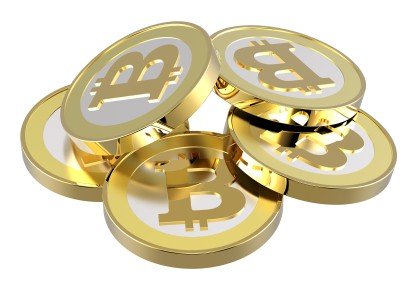A New Currency Is Born: BITCOINS

For those of you with further interest in Bitcoins, there’s an easy and fun explanation of the Bitcoin and its virtual world on the “Mother Jones” website click here.
You may have heard about “Bitcoins” and wonder what they are. Sort of like electronic cash, they’re a virtual currency which people use to transact anonymously on the internet, avoiding the need for credit cards. We all know that the concept of the dollar (or any currency) is just that – a concept. Banks do not actually hold paper or coins that represent what is in your account – money is already nearly all virtual at this point. But the total number of dollars in the economy is more or less controlled by the U.S. Federal Reserve. Who controls the number of Bitcoins? Someone named Satoshi Nakamoto, which is of course a pseudonym, created the software that is behind this virtual world currency. He released it into the world in 2009, and the use of this virtual currency has grown exponentially since then. I must warn you that this is the easy part to conceptualize in the Bitcoin story, but here goes:
How do you get Bitcoins? There are two ways. The simplest way is to buy them by creating a “virtual wallet” using publicly available software, and then linking it to your bank account. Then you buy Bitcoins from an anonymous vendor. Or, if you are an expert programmer, you can “mine” Bitcoins by writing software to more deeply encrypt the Bitcoin algorithm (I told you we were past the easy part!). It turns out the Bitcoin world rewards programmers for creating and modifying the security systems that protect the Bitcoin. If you’re good at cryptography – manipulating very long and complex mathematically-based codes – then you can become a Bitcoin miner and earn more Bitcoins. The typical miner has a string of high-powered servers crunching numbers day and night for weeks on end to earn a few Bitcoins. You might be able to join a group that is trying to mine Bitcoins. In this case you would download special software and allow your PC to be taken over to mine continuously in the background. Even then, the outcome is uncertain – you may or may not be awarded Bitcoins.
Because mining of Bitcoins in the complex fashion described above is the only way to create them, there is a limited supply of Bitcoins in the virtual world. The usage and public profile of Bitcoins have been rising, and both have increased dramatically in the past year because of several factors. Various banking crises around the world since 2008 have given many people pause, so they are looking for alternative ways to store money. Bitcoin is the answer for some. The recent collapse of the Cypriot banking system sent Bitcoin rocketing to the top of the Google search rankings, and into the headlines as well. With limited supply, this recent spike in demand has driven up the price – exponentially. In August 2012, the cost of one Bitcoin was about $10. By April 4, 2013 it was $140 per Bitcoin, and on April 10, 2013, it hit $234 per Bitcoin. Not bad for something with no intrinsic value. (Prices have since crashed back to the $100 level. Source: bitcoincharts.com).
The anonymous nature of the Bitcoin is attractive to industries that are less-than-legal. Bitcoins have been a favorite of those trading in illegal and recreational drugs, for example. While virtual currencies such as Bitcoin may seem like a good idea in a world of rampant money printing, remember that there is another side to the unregulated Bitcoin, so to speak. If all your Bitcoins are lost or stolen, there is no recourse to the FBI, the Federal Deposit Insurance Corporation, the Fed or the Office of the Comptroller of the Currency. Some Bitcoin users have awakened to find their virtual wallets left open and all their Bitcoins gone! Even if they could identify the thief, these victims of Bitcoin theft have no recourse in the physical world.


